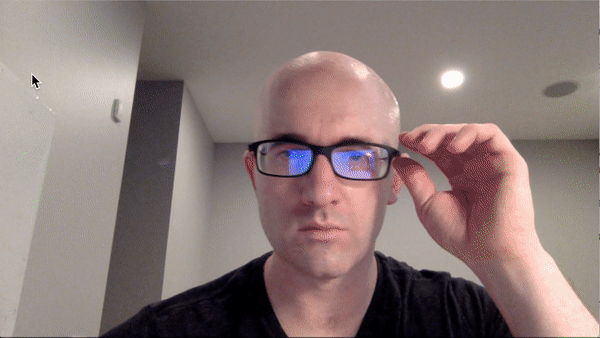This project detects facial keypoints and let's you overlay snapchat style filters to it.
| Facial Keypoint Detection | Filter Overlay |
|---|---|
 |
 |
For better and faster results, GPU support is required. CPU should work fine as well.
- Clone the repository, and navigate to the downloaded folder.
git clone https://github.com/ysharc/Facial-Keypoint-Detector.git
cd Facial-Keypoint-Detector
-
Create (and activate) a new environment with Python 3.6 and the
numpypackage.- Linux or Mac:
conda create --name FKD-App python=3.6 numpy source activate FKD-App- Windows:
conda create --name FKD-App python=3.6 numpy scipy activate FKD-App -
Install/Update TensorFlow (for this project, you may use CPU only).
- Option 1: To install TensorFlow with GPU support, follow the guide to install the necessary NVIDIA software on your system.
pip install tensorflow-gpu==1.3.0- Option 2: To install TensorFlow with CPU support only:
pip install tensorflow==1.3.0 -
Install/Update Keras.
pip install keras -U
-
Switch Keras backend to TensorFlow.
- Linux or Mac:
KERAS_BACKEND=tensorflow python -c "from keras import backend"- Windows:
set KERAS_BACKEND=tensorflow python -c "from keras import backend" -
Install a few required pip packages (including OpenCV).
pip install -r requirements.txt
All of the data you'll need to train a neural network is in the AIND-CV-FacialKeypoints repo, in the subdirectory data. In this folder are a zipped training and test set of data.
- Navigate to the data directory
cd data
- Unzip the training and test data (in that same location). If you are in Windows, you can download this data and unzip it by double-clicking the zipped files. In Linux/Mac, you can use the terminal commands below.
unzip training.zip
unzip test.zip
You should be left with two .csv files of the same name. You may delete the zipped files.
Troubleshooting: If you are having trouble unzipping this data, you can download that same training and test data on Kaggle.
Now, with that data unzipped, you should have everything you need!
- If you're interested in knowing the whole process, then run the interactive jupyter notebook and follow the instructions.
jupyter notebook CV_project.ipynb
- Web app [coming soon!]